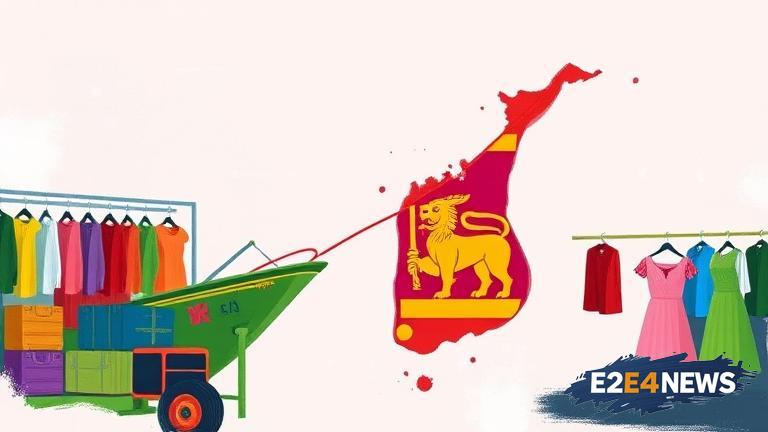Sri Lanka’s garment industry has experienced a notable surge in exports, with a total value of $2.4 billion recorded from January to June 2025. This represents an 8.9% increase compared to the same period in the previous year. The growth is attributed to the rising demand from key markets, including the United States, the European Union, and other countries. The garment sector is one of the largest foreign exchange earners for Sri Lanka, and this increase is expected to have a positive impact on the country’s economy. The industry has been working to diversify its product range and expand its market reach, which has contributed to the growth in exports. Additionally, the government’s efforts to promote the garment industry through various initiatives and incentives have also played a role in this increase. The garment exports from Sri Lanka include a wide range of products, such as apparel, textiles, and accessories. The country’s strategic location, skilled workforce, and favorable business environment make it an attractive destination for foreign investors and buyers. The growth in garment exports is also expected to create new job opportunities and stimulate economic growth in the country. However, the industry still faces challenges, such as competition from other countries and the need to comply with strict quality and safety standards. To address these challenges, the industry is focusing on improving its productivity, quality, and sustainability. The use of technology, such as automation and digital printing, is also becoming more prevalent in the industry. Furthermore, there is a growing emphasis on sustainable and eco-friendly practices, such as the use of organic cotton and recycling of materials. The garment industry in Sri Lanka is also working to improve its supply chain management and logistics, to ensure timely and efficient delivery of products to customers. The government is also providing support to the industry through various initiatives, such as training programs and trade promotions. The growth in garment exports is expected to continue in the coming months, driven by the increasing demand from key markets and the industry’s efforts to diversify and expand its product range. The industry is also expected to play a key role in the country’s economic development, by creating new job opportunities and generating foreign exchange earnings. In addition, the growth in garment exports is also expected to have a positive impact on the country’s trade balance, by reducing the trade deficit and increasing the trade surplus. The garment industry in Sri Lanka is a significant contributor to the country’s GDP, and the growth in exports is expected to have a positive impact on the country’s economic growth. The industry is also working to improve its competitiveness, by reducing costs and improving productivity, to remain competitive in the global market. Overall, the growth in garment exports from Sri Lanka is a positive development, and is expected to have a significant impact on the country’s economy and trade balance.





